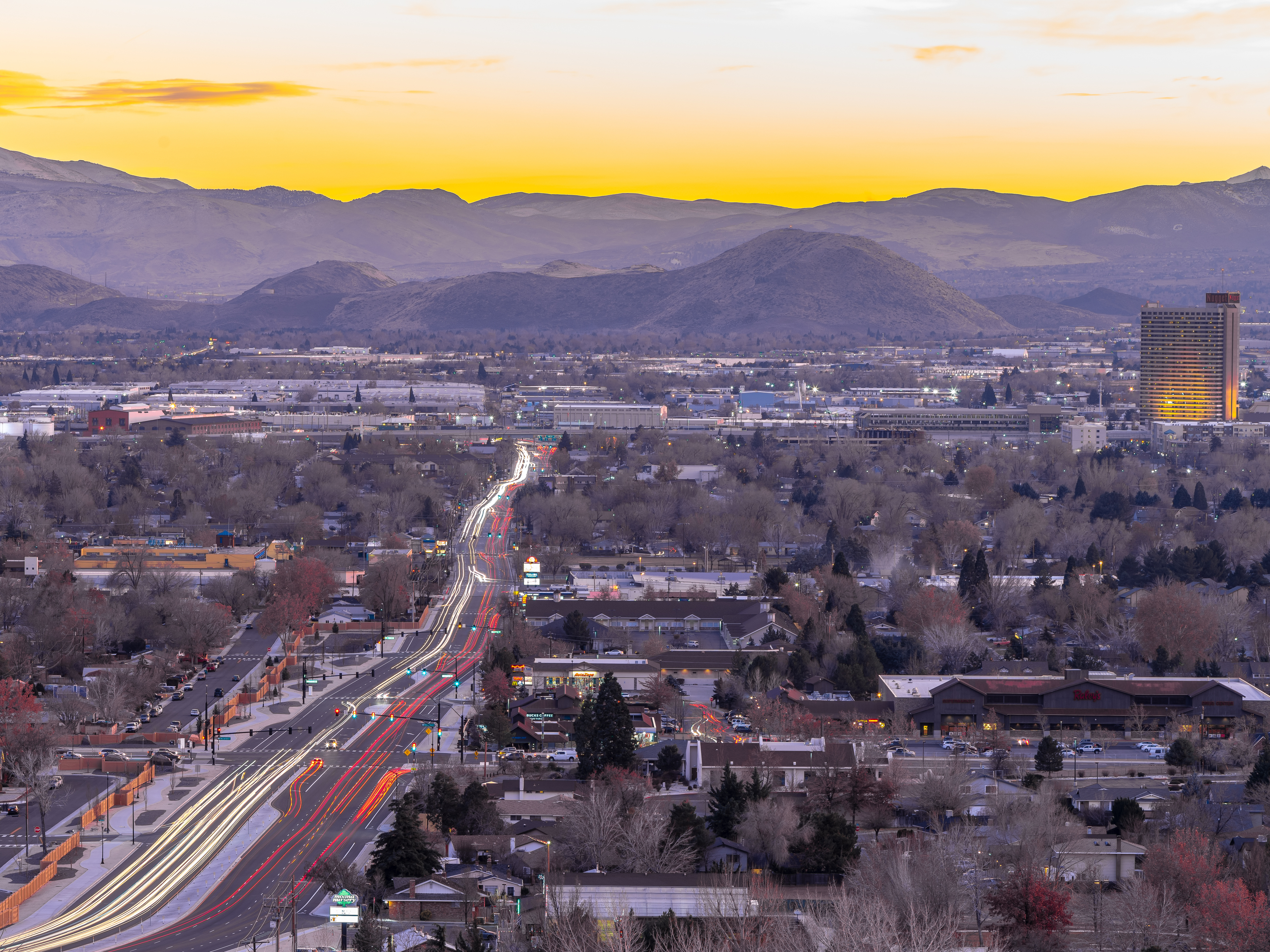Strategy 2: Sustainable land use
Land-use planning includes two elements: the built environment (buildings, roads, infrastructure) and the natural environment. Different building types cause different amounts of GHG emissions, and the locations of those buildings influence transportation emissions. A well-managed natural environment provides clean air and water, absorbs GHGs from the atmosphere and minimizes the impacts of floods, fires and other natural disasters. And it supports native wildlife, their habitats, water quality and flood control, biodiversity, beauty, outdoor recreation and quality of life. Washoe County, a permitting authority, is implementing Envision Washoe 2040, the County’s Master Plan. Approved in 2023, it includes sustainable land use principles and policies designed to reduce development-related emissions and protect the environment.
The Truckee River
The Truckee River is the centerpiece of our community and an essential component of a future climate-resilient community. Protecting water availability and quality in the Truckee River and its watershed from the Lake Tahoe Basin to Pyramid Lake is a critically important climate action because the river supplies Reno and Sparks with 85% of our drinking water. It is also home to two federally listed species (the Lahontan Cutthroat Trout (Oncorhynchus clarkii henshawi) and the cui-ui (Chasmistes cujus) ) and is an essential life-source for the Pyramid Lake Paiute Tribe, who live at the river’s terminus. Although protecting the Truckee River will negligibly affect GHG emissions, ensuring continued water availability and quality is essential to support our communities and region for generations to come.
Tier 1 Actions
Developing the Built Environment Responsibly
16. Ensure implementation of Envision 2040 Master Plan. This plan recommends more than 70 actions aligned with this CAP. A few examples include:Enhancing Green Spaces to Sequester (Remove) Carbon
17. Support Tribes with their environmental stewardship, Land Use plans and sustainability efforts.18. Partner with regional jurisdictions, agencies, stakeholders and citizens to launch a Community Forestry Program. Plant 4,700 trees in Low-Income and Disadvantaged Communities (LIDACs) by 2030.
19. Conserve and protect Washoe County’s wild and native open spaces.
20. Protect and enhance the Truckee River and its watershed.
Tier 2 Actions
51. Conduct Direct Air Capture (DAC) carbon capture pilot project52. Encourage locally-grown and plant-rich diets
53. Support local farms for carbon sequestration and vehicle mile traveled (VMT) benefits
54. Identify incentives for private land owners to increase carbon sequestration (removal) through local vegetation, while avoiding increased fire risk.

